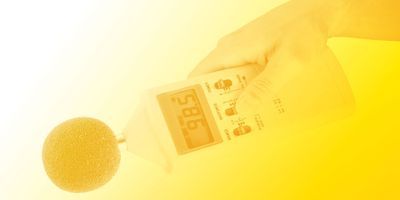Laboratory Noises and What to Do About Them
How to prevent noise-induced hearing loss in your laboratory
Believe it or not, laboratories have noise issues. Often, they are overlooked or ignored. This article alerts you to the unique and potentially significant noise hazards present in laboratory workplaces.
What noise sources are we talking about? We are most concerned with conditions and situations that could lead to noise-induced hearing loss. They are usually related to equipment that hinders communication, disturbs concentration, or reduces performance. Our hope is to get you thinking about the not-so-obvious hazards associated with high noise areas.
Take note of noise
Exposure to loud noise for long enough periods can result in permanent loss of hearing. Noise-induced hearing loss (NIHL) is forever and cannot be restored. However, prevention is usually easy and inexpensive.
Many areas within laboratories and especially research facilities are inherently noisy. Excessive noise can result from equipment such as centrifuges, sonicators, compressors, high-pressure air cleaning and supply equipment, vacuum pumps, and wet vacuum systems.
How loud is too loud? One quick and easy method of checking areas for excessive noise is the “conversation test.” Standing a normal distance apart (physical distancing of six feet is good), attempt a normal conversation with another person in the noisy area. If conversation is difficult or impossible, then the noise might be excessive. If that is the case, have the areas evaluated by a qualified person, such as an industrial hygienist knowledgeable in occupational noise, measuring techniques, data analysis, and control alternatives.
What is required by regulation?
Noise is measured as sound pressure levels in units known as decibels. In occupational settings, the OSHA noise standard (29CFR 1910.95) mandates hearing protection if employee noise exposure equals or exceeds 90 decibels (dB) averaged over an eight-hour work shift. This is measured on the A-scale and slow response with a standard sound level meter (SLM) and is referred to as the permissible exposure limit or PEL.
Additionally, if any areas or exposures measure 85 dB (OSHA action level or AL) or more, the employer is required to implement a Hearing Conservation Program (HCP). The HCP requires annual audiometric testing, training, and medical surveillance of all impacted workers.
The American Conference of Governmental Industrial Hygienists (ACGIH) recommends a more conservative threshold of 85dB, referred to as a threshold limit value (TLV), which is a guideline, though highly recommended.
Noise exposure assessments
Above we mentioned measuring noise levels with a sound level meter. This is commonly the first step and is referred to as a noise survey. Using a good SLM, you simply take readings at all suspect work areas and note the dB levels. Areas showing more than 85dB should be listed for additional assessment and personal noise monitoring as appropriate.
Both the PEL and TLV are measured as eight-hour time-weighted averages (TWA). Therefore, if your noise survey shows areas that exceed either the PEL or AL (TLV) you should conduct full-shift noise exposure monitoring for a representative number of exposed workers. This monitoring is called personal noise dosimetry. Workers wear dosimeters for the entire work shift which record all noise above the threshold or set baseline. Modern dosimeters track and record all noise and calculate the average noise level and the percentage of allowed dose, or exposure. The average dB level and percent dose are then compared to the OSHA tables and all employees exceeding the AL, PEL or 100 percent dose are placed in your hearing conservation program.
HCP requirements
The HCP contains actions that protect exposed employees. It should include audiometric testing (both baseline and annual), types and use of hearing protection devices, personnel training, and record keeping that are required under the OSHA standard. All employees covered by the HCP must have baseline hearing tests and annual tests thereafter. They must also be provided appropriate hearing protection and trained on its proper use.
Audiometric testing is used to assess noise induced hearing loss for workers and monitor trends over time. NIHL is usually identified by a reduced response to frequencies above 2,000 hertz (Hz). Since normal human speech is in the 2,000 to 4,000 Hz range, noise-induced hearing loss is debilitating at work and in daily life and can have far reaching consequences. All confirmed NIHL cases must be recorded and reported to OSHA. The occupational health professional running the HCP should develop and apply appropriate corrective actions.
Prevention of excess noise exposures
Noise follows the laws of physics. Control of excessive noise falls into three categories: engineering controls, administrative controls, and personal protective equipment. Under the OSHA standard, engineering controls are used first to control the hazard. This can include purchase of newer, quieter equipment, shielding or installation of acoustical sound-deadening enclosures, and/or treatments on walls and ceilings. Administrative controls entail limiting the time an employee spends in the noise hazard area or assigning more than one employee to split the time to complete the task. The last line of defense for preventing excessive noise exposure is using personal protective equipment such as ear plugs or earmuffs.
Summary
This article is a brief introduction to dealing with noise hazards. We hope that you consider potential noise hazards that may impact your facility’s workers. In coming issues, look for advanced noise assessments and control alternatives and the pros and cons of different hearing protection devices. Until next issue, remember—SAFETY FIRST!

